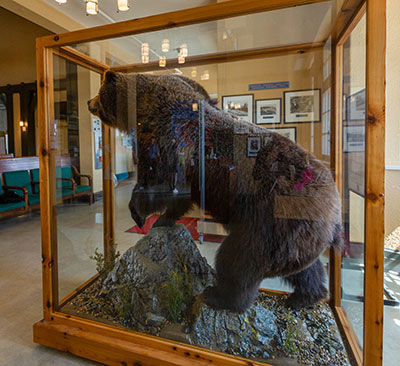
Parks Canada / V. Domaine
Protecting wildlife is a shared responsibility
Jasper National Park
Most requested
National parks are among the most important protected places in Canada. As you visit Jasper National Park, you share responsibility with Parks Canada and Jasper residents for respecting and maintaining the park and the iconic wildlife that lives here. Please take some time to review wildlife safety information to learn ways you can contribute to the conservation of the park’s ecological integrity, and protection of the bears and other wildlife that call this special place home.
What is grizzly bear habitat?
Much of Jasper National Park’s 11,228 km2 expanse is considered grizzly bear habitat. Valley bottoms, including those around the Jasper townsite, are snow-free for the longest time of the year and provide food and important connections for grizzly bear movement. In these places, bears feed on a wide range of vegetation and occasionally on prey-wildlife such as elk calves and ground squirrels. The movement patterns of bears going from one place to another occur in wildlife corridors, which are like highways for travelling wildlife. When roads and railways cross these corridors, the results are sometimes bad for bears.
The grizzly bear in the Jasper train station

Being struck by a vehicle or train is a risk to grizzly bears and other wildlife. The large male grizzly mounted in the Jasper train station was recovered from rocky bluffs by the railway tracks a few kilometres west of the Jasper townsite. Hit by a passing freight train, the bear suffered internal injuries from the impact and died nearby. The bear was recovered by resource conservation specialists and placed in the train station to raise awareness of grizzly bears, their habitat and our shared role in protecting them.
- Learn more about grizzly bears in Jasper National Park
- Read up on the roles of Parks Canada and visitors in protecting grizzly bears and other species at risk
- Download the latest “Bears and People” brochure
- Date modified :